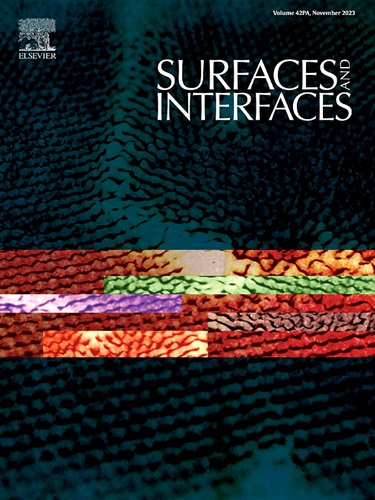Breathable triboelectric textiles with high efficiency air filtration and rapid self-disinfection properties for bioprotection and wireless biosensing
IF 5.7
2区 材料科学
Q2 CHEMISTRY, PHYSICAL
引用次数: 0
Abstract
The frequent emergence of new infectious diseases and the increasing difficulty of epidemic prevention and control have highlighted the necessity for advanced bio-protective materials. Herein, a breathable and waterproof triboelectric medical protective fabric (TMPF) with high air filtration efficiency, as well as rapid self-disinfection and biosensing functions were prepared. TMPF was mainly consisted of a filtration layer of silver nanoparticle-embedded polyimide nanofibers (AgPINFs) and a conductive support layer of AgNP/Ag nanowire (AgNW)/carbon nanotube (CNT)-coated PI fabric. As-prepared TMPF possessed the following advantages: (i) good water resistance and moisture permeability (≥17.2 kPa; 3569.9 m²·24 h); (ii) high filtration efficiency with 99.94% for PM 0.3; (iii) active microbicidal abilities with killing rates of ∼100% against bacterial including E. Coli and S. aureus and an inactivation rate of ∼100% against MS2 virus at an Ag content of 4000 mg/kg with 2 h contact; (v) a wireless real-time sensing ability for limb movement and fine biomotion such as respiratory and laryngeal movements such as breathing, coughing, swallowing, drinking, and speaking through TMPF-based wearable wireless monitoring system (18.7 g). As-prepared TEPF exhibited favorable moisture-penetrability, hydrophobicity, high filtration efficiency, and self-disinfection properties, as well as a self-powered biomotion sensing function, which showed potential applications in medical field.

求助全文
约1分钟内获得全文
求助全文
来源期刊

Surfaces and Interfaces
Chemistry-General Chemistry
CiteScore
8.50
自引率
6.50%
发文量
753
审稿时长
35 days
期刊介绍:
The aim of the journal is to provide a respectful outlet for ''sound science'' papers in all research areas on surfaces and interfaces. We define sound science papers as papers that describe new and well-executed research, but that do not necessarily provide brand new insights or are merely a description of research results.
Surfaces and Interfaces publishes research papers in all fields of surface science which may not always find the right home on first submission to our Elsevier sister journals (Applied Surface, Surface and Coatings Technology, Thin Solid Films)
 求助内容:
求助内容: 应助结果提醒方式:
应助结果提醒方式:


